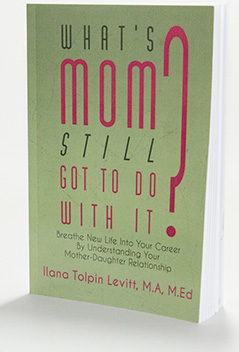Mother-Daughter Workshops: An Interactive Encounter
CONCLUSION
In assessing the value of this workshop, we believe that this brief encounter instills hope for many women who yearn for deeper intimacy with their mothers/daughters, but for various reasons typically reach as impasse. The group as a whole, as well as the mother/daughter co-leadership, serves as a safe context to facilitate new perspectives on the issues. In observing other mothers and daughters, the individuals can experience the possibility of change through communication and understanding. As co-leaders, we function as a model for behavior and negotiation, as well as a symbol of hope for co-existence.
Engaging with other women helps women to overcome the sense of failure, isolation, and shame regarding their experience. The educational aspect of the workshop helps women to gain a clearer understanding of their guilt and anger, and arouses curiosity to inquire further about each others’ lives. Daughters tend to be especially curious about mothers’ parents and grandparents. Inevitably the collective catharsis of the open expression of feelings can be immensely moving. The safety of the group setting allows mothers and daughters to see each others’ deepest vulnerabilities for the first time. For example, a mother sees her “hard and angry” daughter cry, and a daughter sees her “icy cold” mother thaw into tears. Not only do mothers and daughters share tears, but they also share laughter as they examine their unique relationship and common history. This group experience helps to diffuse the intensity of the mother-daughter relationship, allowing both to view their connection with greater objectivity.
We feel grateful for how much we have learned from mothers and daughters, and for the intimate and creative communications they have shared with one another and us. We, as well, have to constantly explore and re-work our own relationship and communication in order to facilitate this work with other mothers and daughters. It has been a personal revelation for us to experience the complexity of this intimate, unique relationship, and to understand it as an evolving, lifetime process.
ACKNOWLEDGMENT
We are grateful for all of the help and support of Dr. Barbara Cohn–for her insights, recommendations and invaluable suggestions in writing this paper.
REFERENCES
Bergman, S.J. (1992). The woman-man relationship: Impasses and possibilities, The Stone Center, 55. (work in progress). Wellesley: Wellesley College.
Caron, R.F. & Caron, A.J. (1982). Child Development, 53, 1008-1015).
DeBold, E., Wilson, M. & Malave, I. (1993). Mother daughter revolution. Reading: Addison-Wesley Publishing Co.
Freud, S. (1931). Female sexuality, Vol. 21. Standard Edition.
Gilligan, C. (1982). In different voice. Cambridge: Harvard University Press.
Gilligan, C. (1990). Making connections: The relational worlds of adolescent girls at Emma Willard School. Cambridge: Harvard University Press.
Gilligan, C. (1990). Teaching Shakespeare’s sisters, Michigan Quarterly Review, 29, 501-36.
Goldenberg, I., & Goldenberg H. (1985). Family therapy: An overview. Pacific Grove: Brooks-Cole Publishing Co.
Henley, N. (1985). Signs, Psychology and Gender.
Herman, J. (1992). Trauma and recovery. New York: Basic Books.
Korner, A.F. (1974). Sex differences in behavior. Friedman, R., Richart, R., & Vande Wiele, R. (Eds.). New York: Wiley.
Levinson, D. (1996). Seasons of a woman’s life. New York: Alfred A. Knopf.
Lichtenstein, H. (1961). Identity and sexuality, Journal of the American Psychological Association, 24, 3-27.
Mahler, M., Pine, F., & Bergman, A. (1975). The psychological birth of the human infant. New York: Basic Books.
Miller, J.G. (1971). Living systems. New York: McGraw Hill.
Neugarten, B. (1979) Time, age, and the life cycle, American Journal of Psychiatry, 136, 887-893.
Notman, M., & Nadelson, C. (1990). Women and men. Washington, D.C.: American Psychiatric Press, Inc.
Restack, R. (1979). The brain’s last frontier. New York: Doubleday.
Silverman, D. (1987). What are little girls made of? Psychoanalytic Psychology, 4, 315-334.
Stern, D. (1985). The interpersonal world of the infant. New York: Basic Books.
Stiver, I. (1986). Beyond the Oedipus complex: mothers and daughters, The Stone Center. Wellesley: Wellesley College.
Stoller, A. (1968). The sense of femaleness, Psychoanalytic Quarterly, 37, 47-55.
Wilters, L., Carler, Papp, & Silverstein (1988). The invisible web. New York: Guilford Press.


